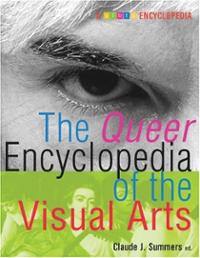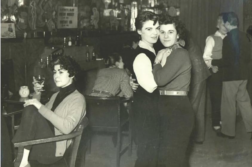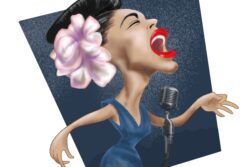 The Queer Encyclopedia of the Visual Arts
The Queer Encyclopedia of the Visual Arts
Edited by Claude J. Summers
Cleis Press. 373 pages, $29.95 (paper)
THE 200 ENTRIES in The Queer Encyclopedia of the Visual Arts cover individuals, artistic movements, time periods, countries, and topics in which art history is revisited to illustrate (both literally and figuratively) the range of sexual orientations, known and unknown, of the artists. Doubtless some individuals, especially from the distant past, might be surprised to find themselves included. Of Albrecht Dürer, for example, it is said that he “may have had a homosexual relationship”—this on the basis of a few lines in two letters he wrote and on the themes of some of his works, from which it is inferred that he was “drawn to the idea of intimate male contact.”
Editor Claude J. Summers states in his introduction that “the most important criteria in determining whether an artist is assigned an entry is his or her contribution to queer visual arts.” Take, for example, Parmigiano (Francesco Mazzola) about whose Renaissance-era life little is known, but whose “refined and tortuously complex style has often appealed to a gay male audience,” and some of whose work “may be interpreted homoerotically.” Both of these entries are illustrated, but there are far fewer pictures than one would expect in a book on the visual arts.
“One of the foremost practitioners of pictorial photography” in the U.S. in the early to mid-20th century was Canadian-born Clara Estelle Sipprell, who sounds as if she would have fit well in the Stein-Toklas circle. Bohemian in fashion, she lived with women throughout her ninety years, and the names of two of the women are engraved on her burial memorial. Immediately preceding this entry is one for the heterosexual artist George Segal and his iconic, life-sized sculptures of two standing men and two seated women, situated in Greenwich Village across the street from the Stonewall Inn. The entry details the controversy around the sculpture, its travels through the country, and Segal’s reluctance to accept the commission, which he did only after all the gay and lesbian artists of similar stature turned it down. Explained Segal: “I’m extremely sympathetic to the problems that gay people have. … I couldn’t refuse to do it.”
Some of the entries one might expect to find here, such as Art Deco illustrator Erte and cartoonist Diane “Hothead Paisan” DiMassa, are to be found on the website from which this book derives, which is at glbtq.com. Others, such as Japanese manga, are accorded a only small paragraph as part of a broader entry (on Japanese art), but are described more fully at the website. Some artists that one might have expected appear neither on the site nor in print, such as World War I-era printmakers Ethel Mars and Maud Hunt Squire, and early to mid-20th-century African-American artist Beauford Delaney. Certainly, additions may be made to the website, which also sponsors a discussion board.
Claude Summers was the co-editor of the estimable Gay and Lesbian Literary Heritage (1995). The Queer Encyclopedia doesn’t quite match this achievement; nor does it live up to its billing as an encyclopedic work, as it is far from exhaustive. Perhaps a different format would have allowed for more images, perhaps even some in color, with a comprehensive index. When it is inconvenient to go to the website, the book can serve as a handy reference. Each entry closes with several references for a wide variety of sources. Despite its errors of omission, The Queer Encyclopedia is redeemed by the excellent qualifications of its contributors, who include academicians, curators, librarians, and researchers, whose reliability can be counted on and whose writing style is uniformly good.





